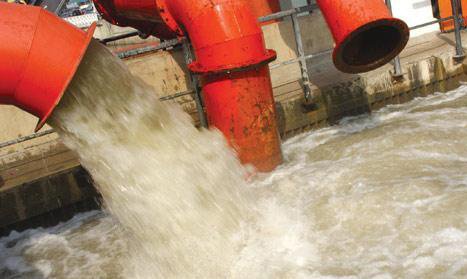 Nabeel Khan Niazi
Nabeel Khan Niazi
ISLAMABAD: The untreated release of contaminated wastewater from various industriesand municipal supplies into soil and water bodies has emerged as a major environmental, social and public health concerns while the implementation of relevant laws is virtually at zero level, thus forcing Pakistan to facing an accumulative loss of billions of rupees per annum to the national kitty in addition to causing various human diseases.
A fresh data prepared by the Punjab government reveals that huge quantity of wastewater is discharged every day from tanneries, textiles, paper, sugar, dairies, vegetable, ghee industries, and from domestic use, respectively, into the environment without any treatment.While it is mandatory by legislation to treat industrial wastewater before releasing to the soil or water systems, only one per cent of wastewater is treated by industries in the country as majority of the treatment plants at factories are operational.
Surprisingly, the highest amount of wastewater is produced by the biggest city of Karachi followed by Lahore, and Faisalabad, and this wastewater contains a wide range of inorganic and inorganic contaminants, such as heavy metal(loid)s (Cu, Fe, Ni, Pb, Se, As, Cd, Zn, Cr, Hg), dyes, oil, grease, pharmaceuticals, chlorides, fluoride, cyanide, sulphate, ammonia, phenolics, chlorine and detergents.
A nationwide survey conducted by International Water Management Institute (IWMI), Lahore, shows that 32500 acres of land are irrigated with untreated wastewater and about 26 per cent of vegetables are produced by irrigating with this contaminated wastewater.
At present, the renewable water resources are estimated at 248 billion m3/year, surface runoff is estimated at 243 billion m3/year, while groundwater resources are about 55 billion m3 /year, most being the base flow of the river system. Of which 96.8 per cent is withdrawn for agricultural purposes, 1.6 per cent for domestic use and another 1.6 per cent for industrial use.
It is to be mentioned here that the World Bank has listed Pakistan as one of the 17 countries predicted to face severe water shortage by the year 2025.
Experts say that problems of wastewater disposal tend to stem from distortions due to economy-wide policies, failure of targeted environmental policies and institutional failures. Thus laws and regulations have been formulated about treatment and disposal of wastewater but their implementation due to lack of resources and skilled manpower is the real issue, they opined.
They suggested that the government should direct efforts to commercialize and implement the wastewater treatment technology and also provide funds to universities and research organizations to explore the feasibility for on-site application of the technology.
Ibrahim Mughal, an expert on water and water resources, commented that though contamination of water and non-existing reuse of wastewater has posed a potential threat to human health, agriculture, environment as well as water resources, while the bigger problem is the non-implementation of relevant laws.
He said that at present various wastewater treatment methods including physical, chemical and biological methods are used internationally, however, the government of Pakistan hardly takes any tangible initiative to ensure proper use of wastewater.
He regretted that Pakistan is ranked among the most dangerous countries in terms of meeting international environment standards.
Equally, the biggest challenge faced by policymakers at present, is how best to minimize the negative effects of wastewater use, while at the same time obtaining the maximum benefits from this resource.
It is to be mentioned here that Pakistan is signatory to various International Protocols and Conventions to improve environment, however, the progress on implementation side is not satisfactory.
While environmentalists are of the strong view that until and unless the government makes some progress on this front, the situation will continue to damage the overall agriculture as well as human health.